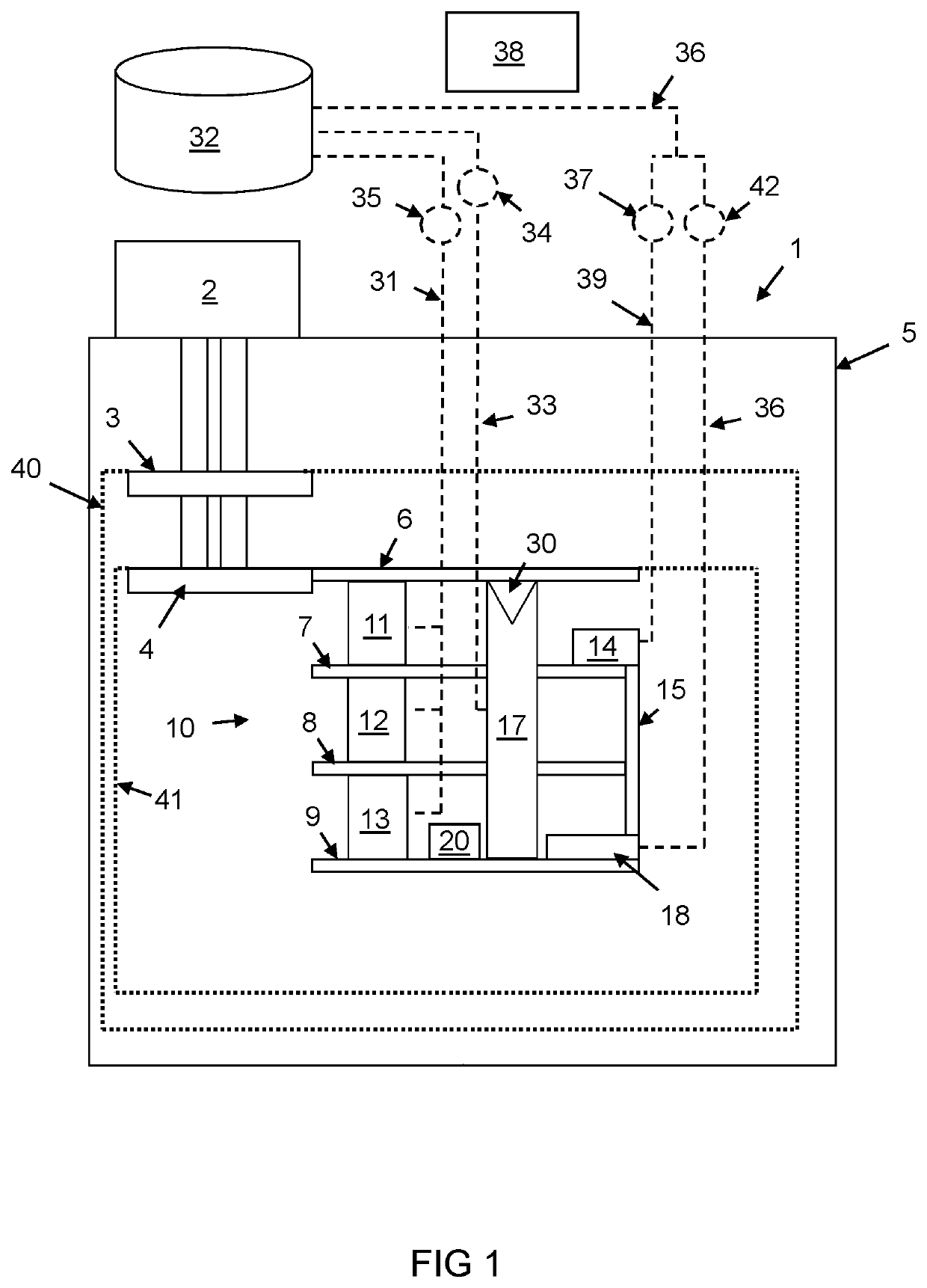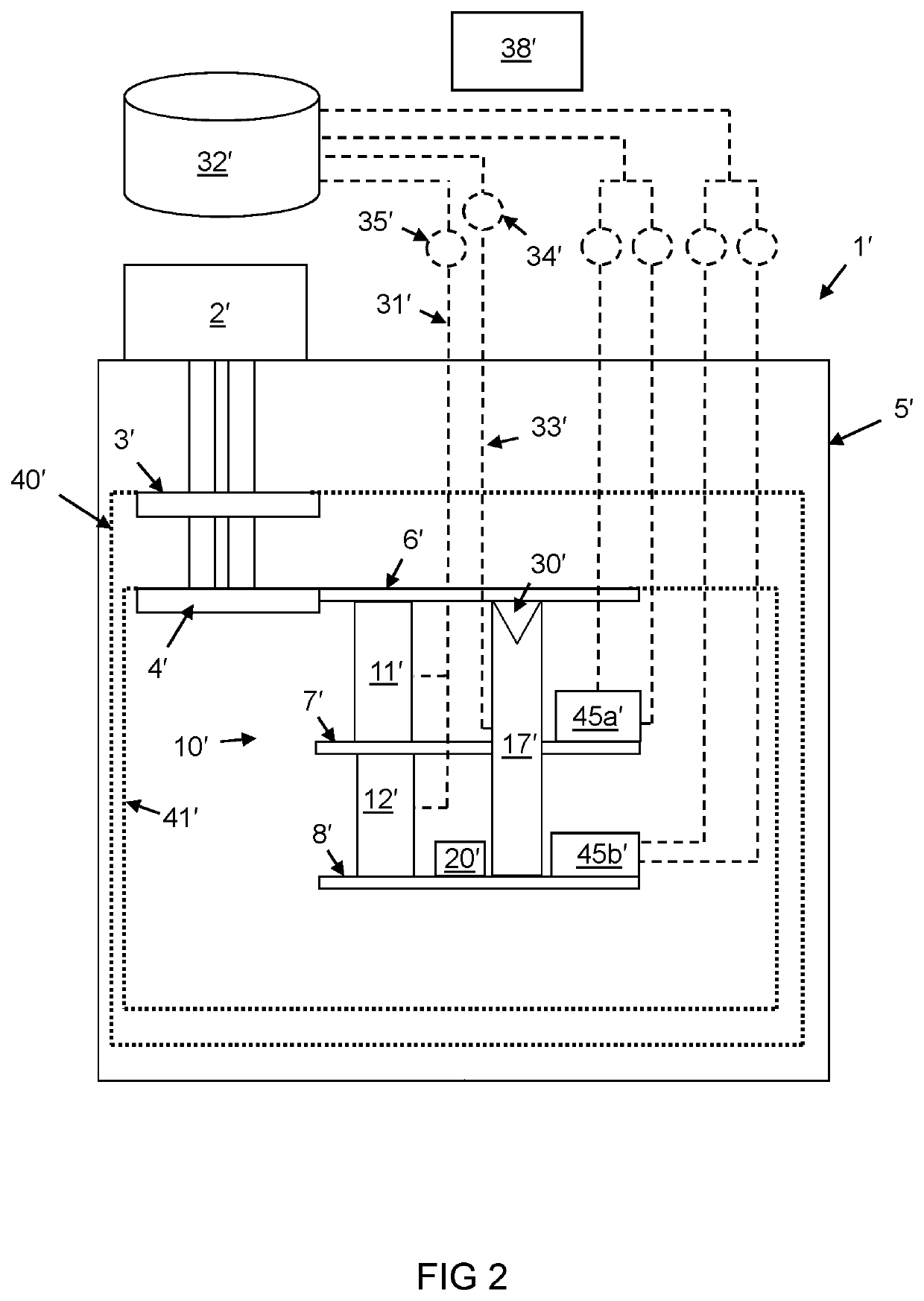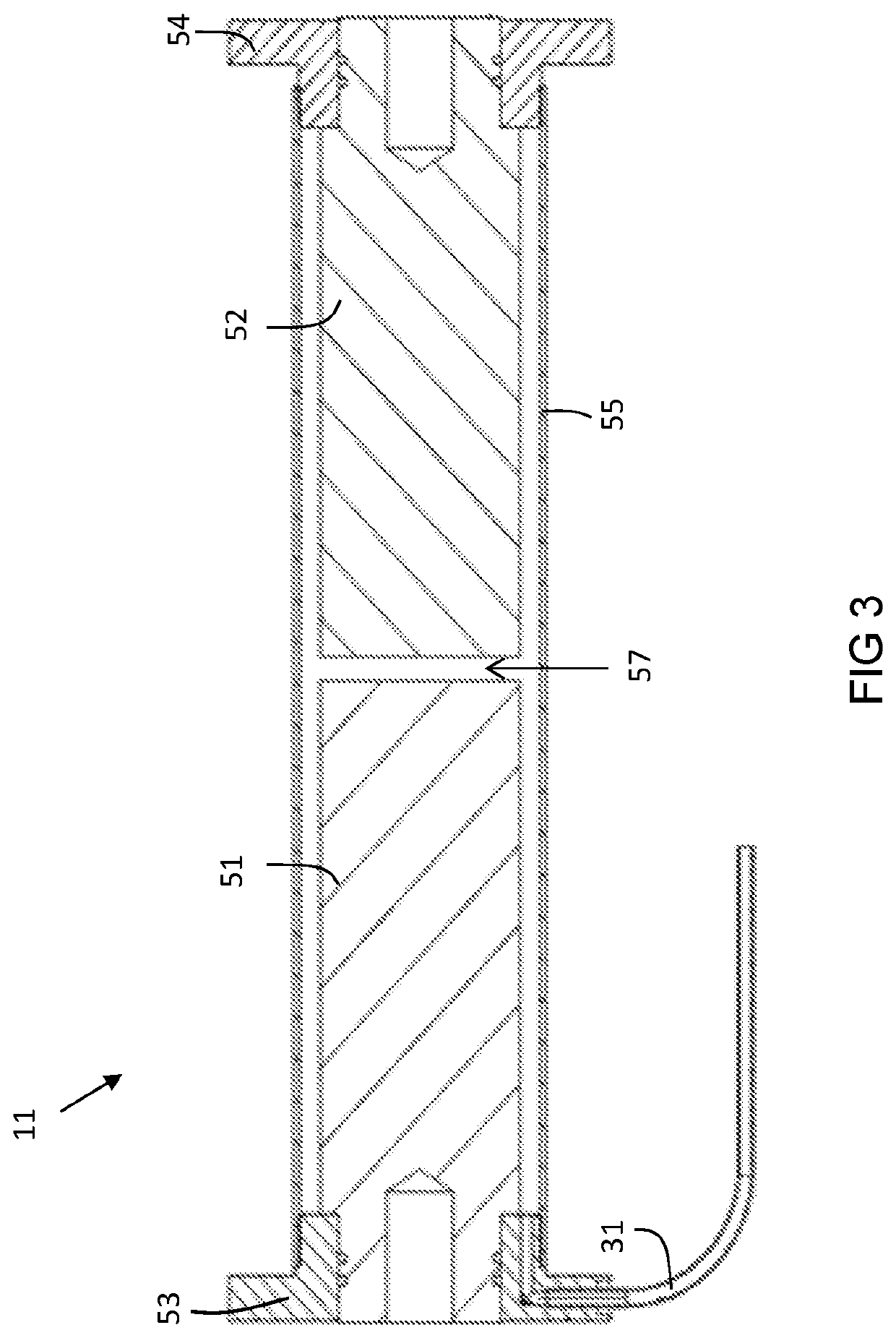Cryogenic Cooling System
a cooling system and cryogenic technology, applied in the field of cryogenic cooling systems, can solve the problems of limiting the overall efficiency of the cooling process, limiting the use of heat pipes, and unable to achieve the effect of reducing the cost of cooling, and achieving high switching ratio, excellent performance, and high effective thermal conductivity
- Summary
- Abstract
- Description
- Claims
- Application Information
AI Technical Summary
Benefits of technology
Problems solved by technology
Method used
Image
Examples
Embodiment Construction
[0050]A first embodiment of a cryogenic cooling system will now described. With reference to FIG. 1, there is illustrated a sectional view of the interior of a cryogen-free cooling system the main part of which is a cryostat 1. Cryostats are well known in the art and are used to provide low temperature environments for various apparatus. The cryostat 1 is typically evacuated when in use, this being to improve the thermal performance by the removal of convective and conductive heat paths through any gas within the cryostat. The cryostat 1 in the present example is a cryogen-free cryostat in that it does not contain a reservoir of liquid helium, the cooling of the cryostat instead being achieved by use of conductive cooling from a mechanical refrigerator. However, despite the “cryogen-free” term, some coolant (in this case helium) is typically present within the cryostat when in use, including in the liquid phase.
[0051]The main cooling power of the cryostat 1 is provided by a mechanic...
PUM
 Login to View More
Login to View More Abstract
Description
Claims
Application Information
 Login to View More
Login to View More - R&D
- Intellectual Property
- Life Sciences
- Materials
- Tech Scout
- Unparalleled Data Quality
- Higher Quality Content
- 60% Fewer Hallucinations
Browse by: Latest US Patents, China's latest patents, Technical Efficacy Thesaurus, Application Domain, Technology Topic, Popular Technical Reports.
© 2025 PatSnap. All rights reserved.Legal|Privacy policy|Modern Slavery Act Transparency Statement|Sitemap|About US| Contact US: help@patsnap.com



